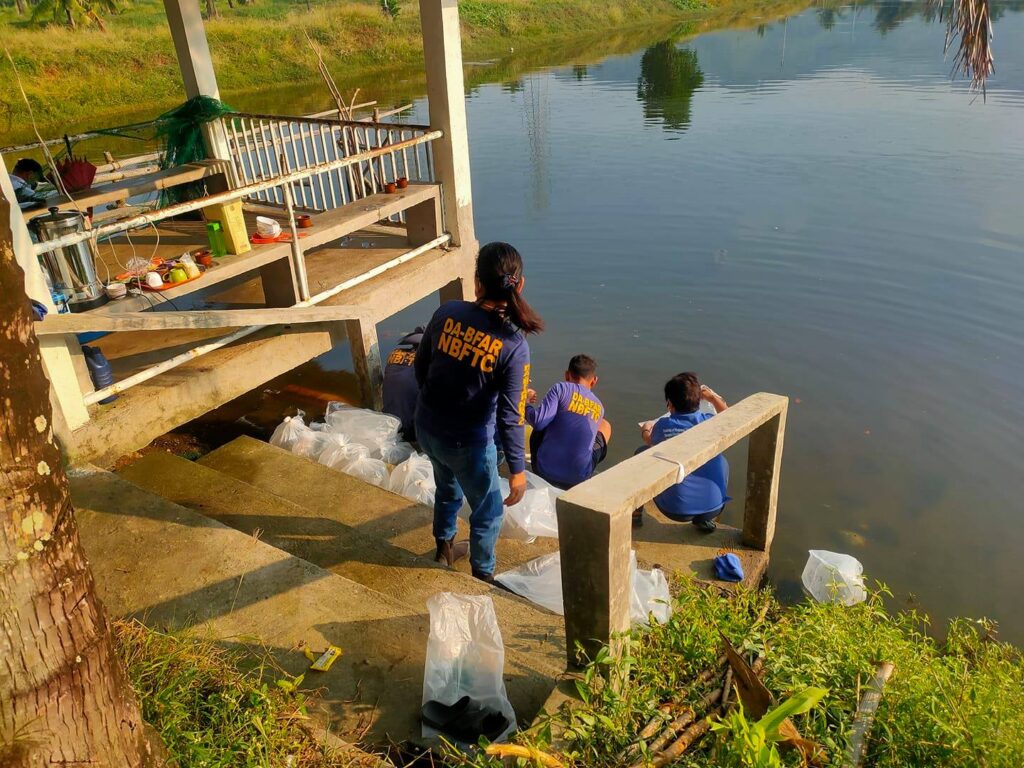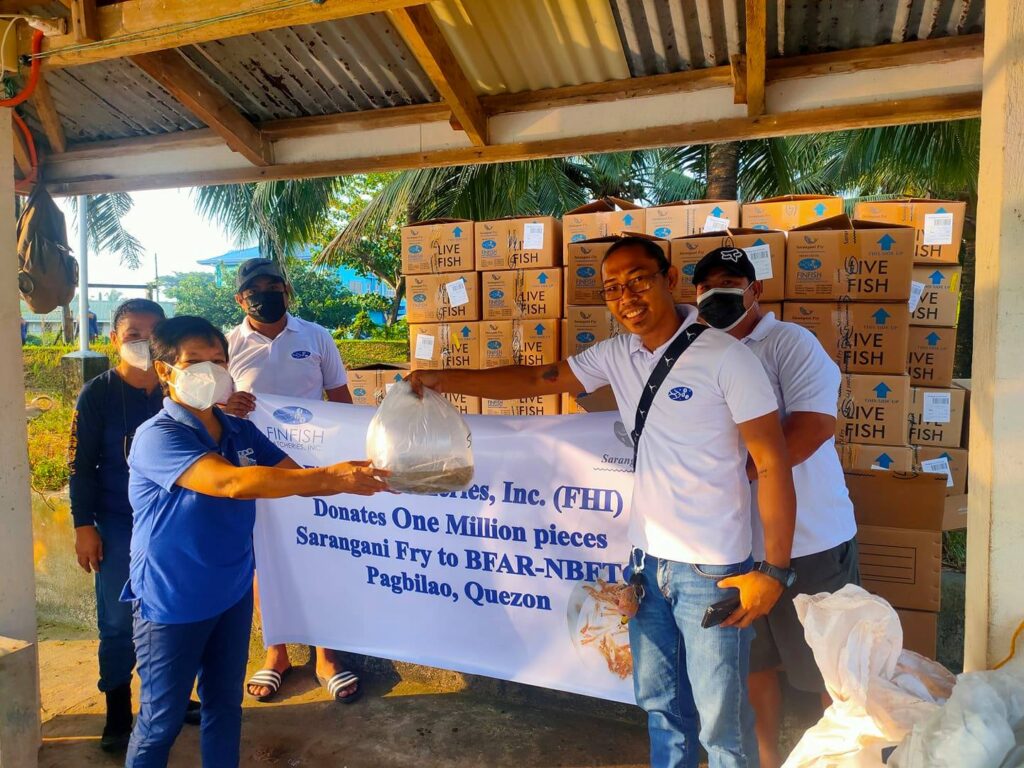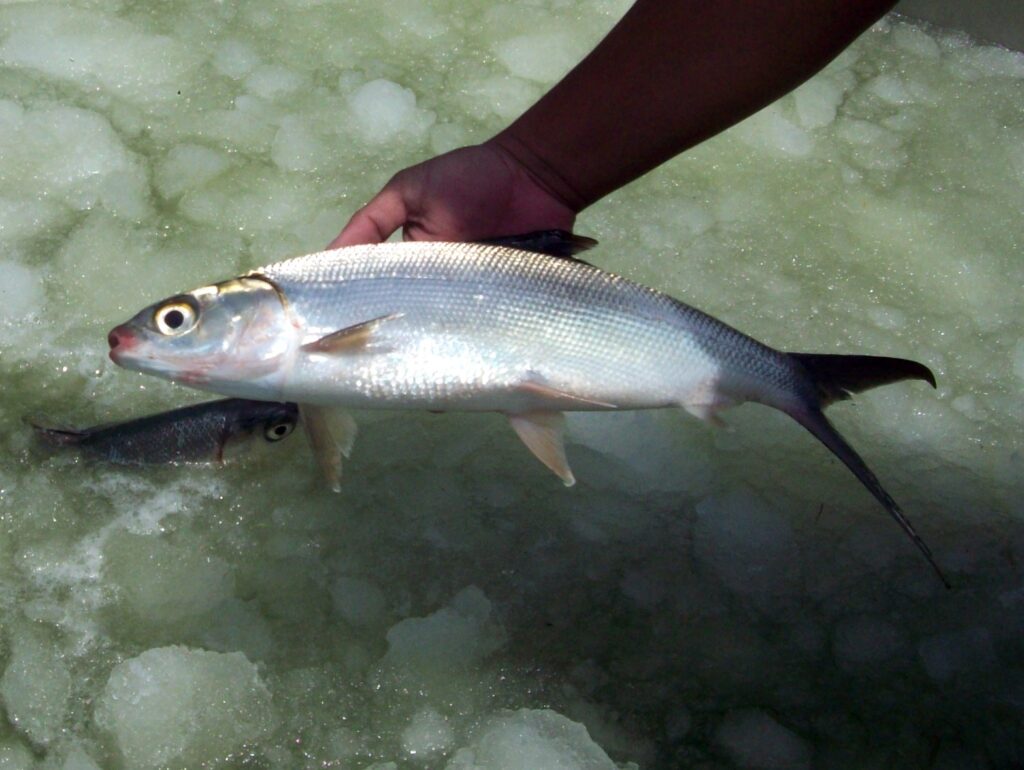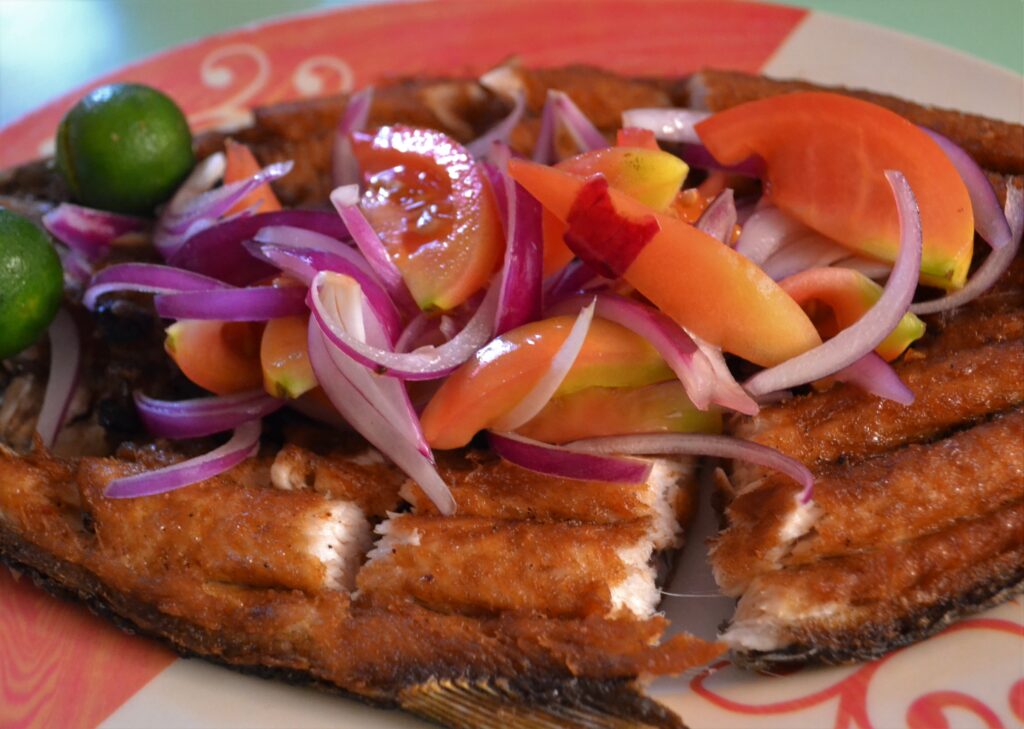FHI DONATES ONE MILLION BANGUS FRY
Text by Henrylito D. Tacio
Photos courtesy of FHI
Aquaculture, the farming of fish in ponds and other bodies of water under controlled conditions, has been identified as one possible solution for the low-catch from the open seas.
In this time of coronavirus disease 2019 (COVID-19) pandemic, farmers who are raising fish deserve to be supported for they help provide fish in the table for people who really need protein.
The Finfish Hatcheries, Inc. (FHI) – touted to be the first and largest commercial milkfish hatchery in the country today – knows this well. So much so that it donated one million pieces of bangus fry to the National Brackish Fisheries Technology Center (NBFTC) of the Bureau of Fisheries and Aquatic Resources (BFAR) in Pagbilao, Quezon last May 31.

“BFAR will grow the bangus fry into fingerlings at its Pagbilao fishpond,” says Rene B. Bocaya, the FHI’s assistant vice-president for sales. “The fingerlings will be dispersed to the small fishpond and cage operators in Quezon Province, Camarines Sur and Camarines Norte.” The donated bangus fry were received by NBFTC senior aquaculturist Carmela Eubion and staff.
According to Bocaya, NBFTC chief Roy Ortega sent him a letter requesting for a fry donation for small fish farmers in Quezon Province. With the nobleness of the request, the donation was approved by the FHI President, Mr. Alex I. Alcantara.
Bocaya immediately called Ortega to inform about the approved donation and to schedule the delivery soonest. The one million bangus fry were delivered by FHI’s Ardee Conde, Joseph Gaa and Lawrence Maghanoy.

For a very long time, the Philippine aquaculture industry was virtually synonymous with bangus culture as it was introduced into the country 400 to 600 years ago. “The backbone of Philippine aquaculture” is how bangus farming has been regarded by most fishery experts.
The Philippines is one of the top bangus producers in the world, along with Indonesia and Taiwan. Bangus – also known as milkfish – can be raised anywhere in the country. It is farmed in brackishwater, freshwater and marine water.
The sleek and silvery bangus is still the most favorite fish among Filipinos. It is the most preferred fish because of its mild, sweet flesh, and its melt-in-the-mouth belly fat. The popularity of bangus can be gleaned in such recipes as bangus en tocho (fried bangus served with a sauce of any of the following: tahure, tokwa, or tausi), bulanglang na bangus (with eggplants, ampalaya, sitao, malunggay, onion, tomatoes, rice washing and bagoong), rellenong bangus (formerly a party dish; now available even in school cafeterias and malls), and bangus lumpia.

The popularity of bangus even extends to other countries. The Philippines has been exporting bangus to the United States, Middle East, England, Canada and Japan. It exports bangus in different forms such as smoked, dried, marinated, frozen and canned products.
“We export bangus to countries where there are a lot of Filipinos and overseas foreign workers,” said Dr. Rafael D. Guerrero III, former executive director of the Philippine Council for Aquatic and Marine Research and Development (PCAMRD) and now an academician with the National Academy of Science and Technology (NAST).
To make fishponds and fish cages productive throughout the year, adequate supply of bangus fingerlings is necessary.
“Historically, milkfish fry abound in the country, especially during the fry season,” the PCAMRD primer states. “During recent years, the number collected has been dwindling.”
Normally, bangus fry appears in different places and various seasonal peaks. Areas like Southern Leyte, Western Samar, Bohol, Negros Oriental and Occidental, Antique, and Iloilo have two peak seasons: March to July and October to November. Provinces like Cotabato and Zamboanga del Sur have fry available year-round.
Livelihood Options for Coastal Communities, published by the Silang-based International Institute of Rural Reconstruction, says peak gathering days occur during high tides after two or three days following a new moon or a full moon. The gonadosomatic index (GSI) or peak-spawning season of bangus starts in March to June and drops in August to September.

During the breeding season, the rising GSI value coincides with rising seawater temperature. Spawning regularly occurs among five- to seven-year-old female breeders (called sabalo) in the wild. Fertility is about 300,000 to one million eggs per kilogram weight of sabalo.
Several bangus fry collection methods are practiced in the Philippines. This includes fry barriers or fences, seine nets and “bulldozer” nets.
The collected bangus fry are placed in well-ventilated containers, preferably wooden vats or big earthen jars filled with clean brackishwater. The containers are kept in cool areas. Overexposure to sunlight is avoided or the fry dies. Also, the fry are brought to the concessionaires’ buying stations without delay.
The lack of fry and fingerlings was cited as one of the many problems that beset bangus production in the country. To save the bangus industry from downfall, some growers have imported fingerlings from Taiwan and Indonesia; although others thought this option was not practical as the fingerlings were very expensive.
Enter Finfish Hatcheries, Inc. (FHI), which supplies more than 40% of the country’s national requirement of bangus fry. “We have been in the bangus fry production business since 1997,” points out Bocaya.
FHI’s hatchery is in Lun Masla, Malapatan , Sarangani Province. Here, more than 10,000 breeders are maintained and managed to produce bangus eggs on a daily basis throughout the year. “The hatchery’s production capacity is 1.2 billion bangus fry each year,” Bocaya said.
According to FHI, more Filipino farmers are now seeding their ponds and cages with bangus fry being sold by FHI, which has major dealers in Luzon, Visayas and Mindanao. Its sales offices in Manila, Bacolod, Iloilo, and General Santos enables deliveries to its customers in the following areas: Pangasinan, Pampanga, Tuguegarao, Laoag, Laguna, Bulacan, Quezon, Palawan, Mindoro, Romblon, Marinduque, Calbayog, Catarman, Sorsogon, Legaspi, Dumaguete, Naga, Masbate, Cebu, Davao, Tacloban, Tagbilaran, Cagayan de Oro, and Zamboanga.
FHI’s expertise in fry hatchery operations goes beyond breeding bangus. It also produces the highest volume and best quality of fry and fingerlings of other high value species that include siganid and seabass.

